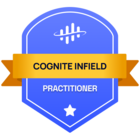Cognite Data Fusion (CDF) is the industrial data operations foundation that makes traditionally siloed operational, engineering and IT data instantly available to users across the organization, enabling better decision making and intelligent workflow automation to improve operational performance.
This release focuses on improving access and discoverability of data and workflow automation. Cut down on time you spend trying to find data, make sense of it, and then deploy and monitor it. We deliver tools to speed up this process and allow you, the user, to compound the value of your work. Improved performance and capabilities for your digital teams means a faster time to value for operations.
Explore and discover the right data for your solutions
Use the CDF Data Explorer to find, validate, and learn about the data you need to build solutions. Browse through all the available resource types in your CDF project and drill into details and linked resources, for example, assets and time series with live data, interactive P&IDs, and mapped events.
Learn more: CDF Data Explorer
Configure and rerun contextualization pipelines
Create a pipeline to re-run matching models on data sets. If the data set receives new data, you can re-run the pipeline to find additional matches.
Learn more: Entity matching
Enrich files with geographic location
The new geoLocation field for the Files resource type lets you contextualize and find documents or files related to geographic locations. For example, find seismic reports for an area or drone survey photos from a yard section.
Learn more: Geographic location of files
CDF quickstart guides
Visit our new quickstart guides to learn about our best practices for implementing CDF and quickly get up to speed on the CDF architecture, data model, and data flow.
Monitor your SQL transformations
Subscribe to email notifications to monitor the transformation process and solve any issues before they reach the data consumer. You can add up to 5 email addresses, either to groups or to specific people.
Flexible data modeling with relationships
This release sees the relationships resource type moving from Beta to API v1.
While you can use the assets resource type to model equipment relations as a tree, relationships let you model data in additional graph structures meaningful for your organization.
Data engineers can use relationships to organize assets into multiple structures. For example, you can order assets by the process flow or the physical connectivity in a grid structure to let users efficiently locate data for nearby equipment.
Some users in your organization may find it useful and efficient to organize the equipment by its function in a maintenance hierarchy. Others may benefit from having the equipment organized by physical location in a location-based hierarchy:

See Modeling asset structures with relationships for more examples.
Beyond structuring assets, you can use relationships to create richer connections between data elements and build a knowledge graph on top of the existing data.
To learn more about how relationships can represent industrial reality, we recommend reading the "Building a contextualized power system network model" whitepaper.


 Check the
documentation
Check the
documentation Ask the
Community
Ask the
Community Take a look
at
Academy
Take a look
at
Academy Cognite
Status
Page
Cognite
Status
Page Contact
Cognite Support
Contact
Cognite Support

